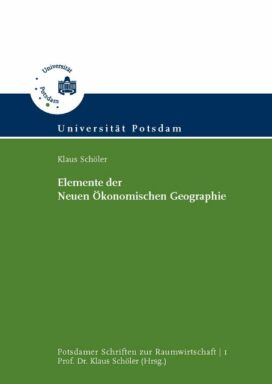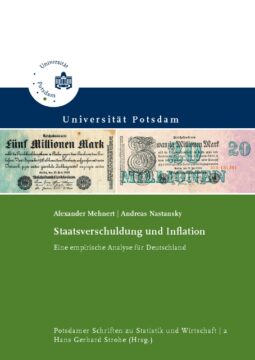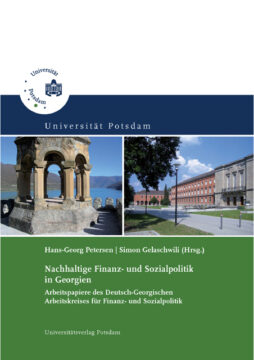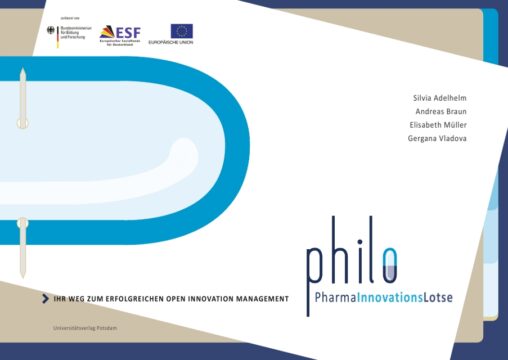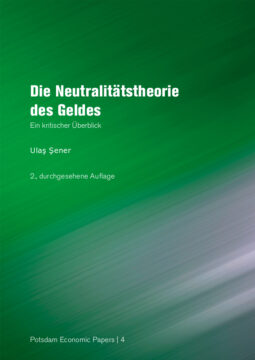The most important question of regional economics is: What are the reasons for the existence, the growth, and the changes of regional economic structures? Without any doubt, agglomerations which are not based on natural sources belong to the most significant regional structures. The New Economic Geography gives answers – based on a microeconomic total model with different regions and industrial sectors, with heterogeneous goods and different transport costs – to the questions with regard to the reasons of the existence of agglomerations. This book pursues three objectives: First of all, the new paradigm is connected with the historical background of the traditional regional economics and trade theory. Furthermore, the basic model is described in detail and then discussed from a critical point of view. Finally, some possible extensions are introduced, which make it possible to eliminate some criticized elements of the basic model.
ISBN: 978-3-86956-083-0
112 pages
Release year 2011
Series: Potsdamer Schriften zur Raumwirtschaft , 1
8,00 €
Non-taxable transaction according to § 1 (1) UStG/VAT Act in combination with § 2 (3) UStG/VAT Act a. F. Providing this service, the University of Potsdam does not constitute a Betrieb gewerblicher Art/Commercial Institution according to § 1 (1) No. 6 or § 4 KStG/Corporate Tax Act. If the legal characterization of our business is changed to a commercial institution subsequently, we reserve the right to invoice VAT additionally. zzgl. Versandkosten
The most important question of regional economics is: What are the reasons for the existence, the growth, and the changes of regional economic structures? Without any doubt, agglomerations which are not based on natural sources belong to the most significant regional structures. The New Economic Geography gives answers – based on a microeconomic total model with different regions and industrial sectors, with heterogeneous goods and different transport costs – to the questions with regard to the reasons of the existence of agglomerations. This book pursues three objectives: First of all, the new paradigm is connected with the historical background of the traditional regional economics and trade theory. Furthermore, the basic model is described in detail and then discussed from a critical point of view. Finally, some possible extensions are introduced, which make it possible to eliminate some criticized elements of the basic model.
Recommended Books
-
 2012
2012Andreas Nastansky, Alexander Mehnert
Staatsverschuldung und Inflation
10,30 €Non-taxable transaction according to § 1 (1) UStG/VAT Act in combination with § 2 (3) UStG/VAT Act a. F. Providing this service, the University of Potsdam does not constitute a Betrieb gewerblicher Art/Commercial Institution according to § 1 (1) No. 6 or § 4 KStG/Corporate Tax Act. If the legal characterization of our business is changed to a commercial institution subsequently, we reserve the right to invoice VAT additionally.
zzgl. Versandkosten
Add to cart -
 2008
2008Simon Gelaschwili, Hans G Petersen
Nachhaltige Finanz- und Sozialpolitik in Georgien
10,50 €Non-taxable transaction according to § 1 (1) UStG/VAT Act in combination with § 2 (3) UStG/VAT Act a. F. Providing this service, the University of Potsdam does not constitute a Betrieb gewerblicher Art/Commercial Institution according to § 1 (1) No. 6 or § 4 KStG/Corporate Tax Act. If the legal characterization of our business is changed to a commercial institution subsequently, we reserve the right to invoice VAT additionally.
zzgl. Versandkosten
Add to cart -
 2011
2011Andreas Braun, Elisabeth Müller, Gergana Vladova, Silvia Adelhelm
Philo
16,00 €Non-taxable transaction according to § 1 (1) UStG/VAT Act in combination with § 2 (3) UStG/VAT Act a. F. Providing this service, the University of Potsdam does not constitute a Betrieb gewerblicher Art/Commercial Institution according to § 1 (1) No. 6 or § 4 KStG/Corporate Tax Act. If the legal characterization of our business is changed to a commercial institution subsequently, we reserve the right to invoice VAT additionally.
zzgl. Versandkosten
Add to cart -
 2016
2016Die Neutralitätstheorie des Geldes
8,00 €Non-taxable transaction according to § 1 (1) UStG/VAT Act in combination with § 2 (3) UStG/VAT Act a. F. Providing this service, the University of Potsdam does not constitute a Betrieb gewerblicher Art/Commercial Institution according to § 1 (1) No. 6 or § 4 KStG/Corporate Tax Act. If the legal characterization of our business is changed to a commercial institution subsequently, we reserve the right to invoice VAT additionally.
zzgl. Versandkosten
Add to cart
Publisher Info
Contact
Potsdam University Library
University Press
Am Neuen Palais 10
14476 Potsdam
Germany
verlag@uni-potsdam.de
0331 977-2094
0331 977-2292

